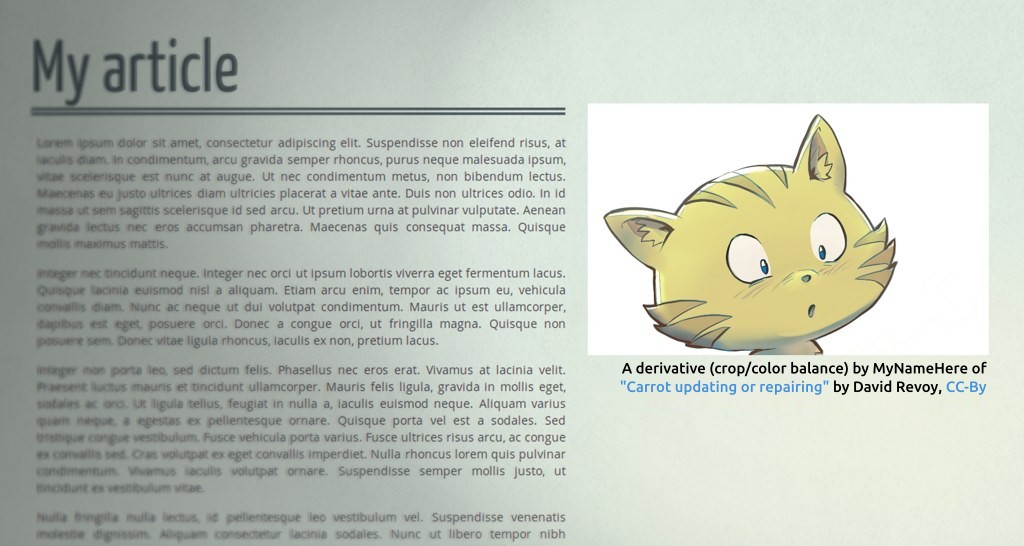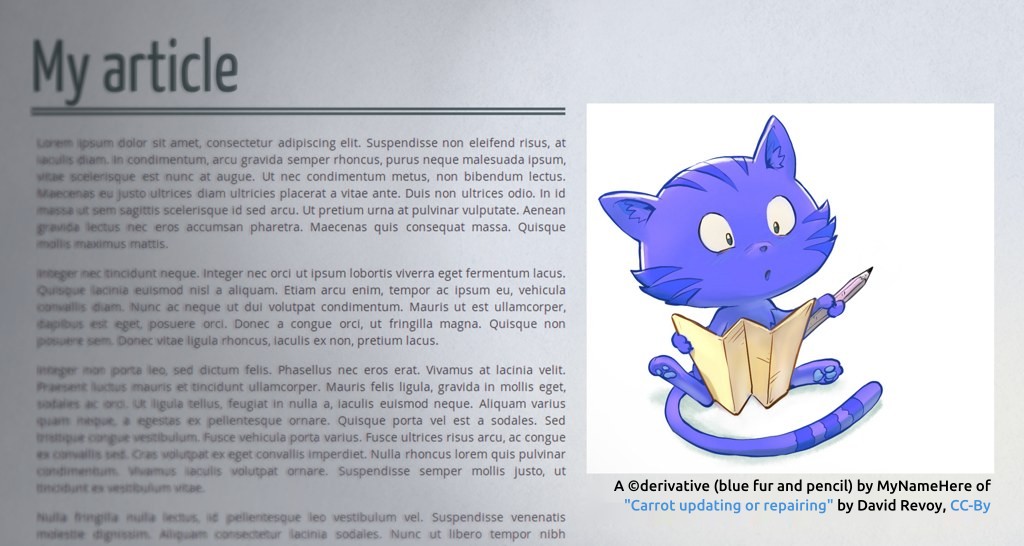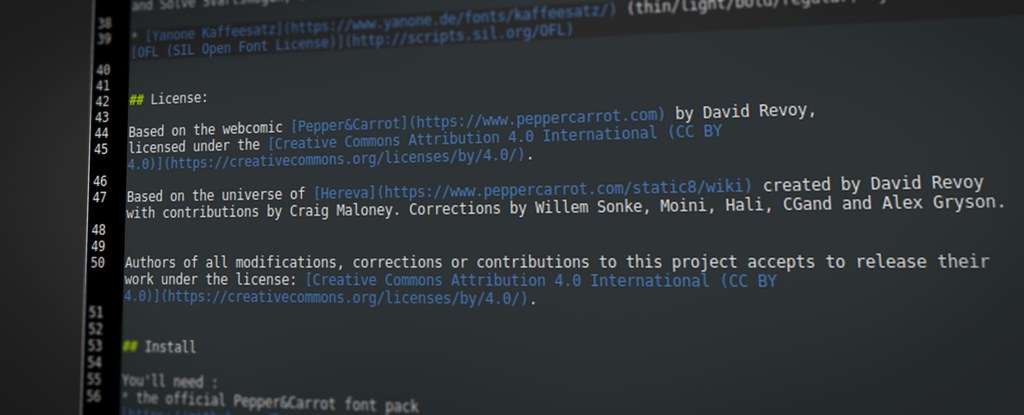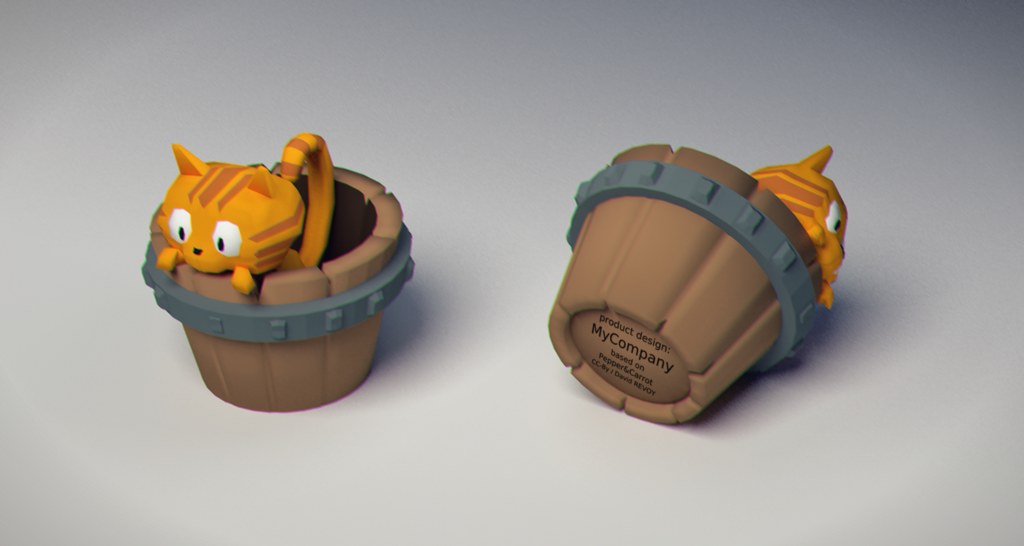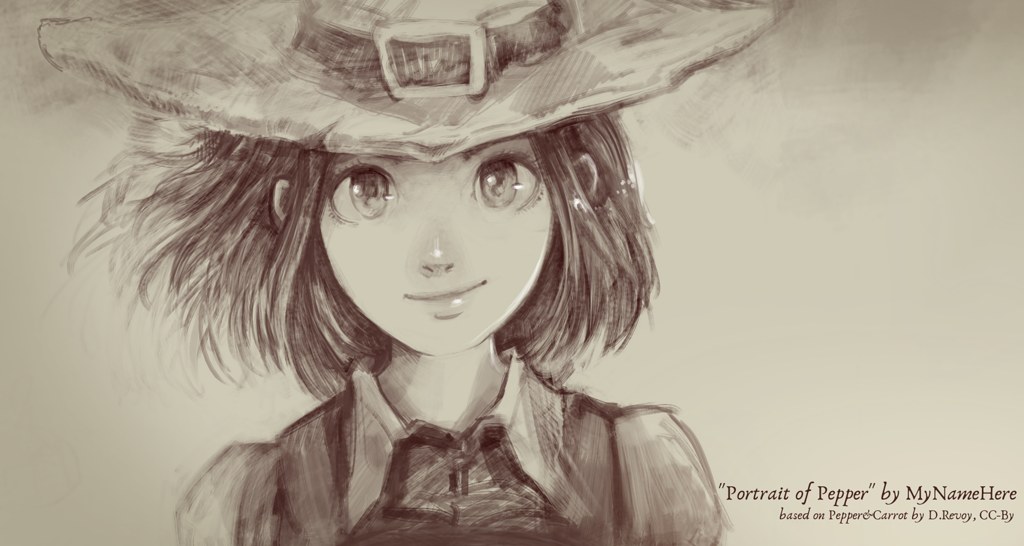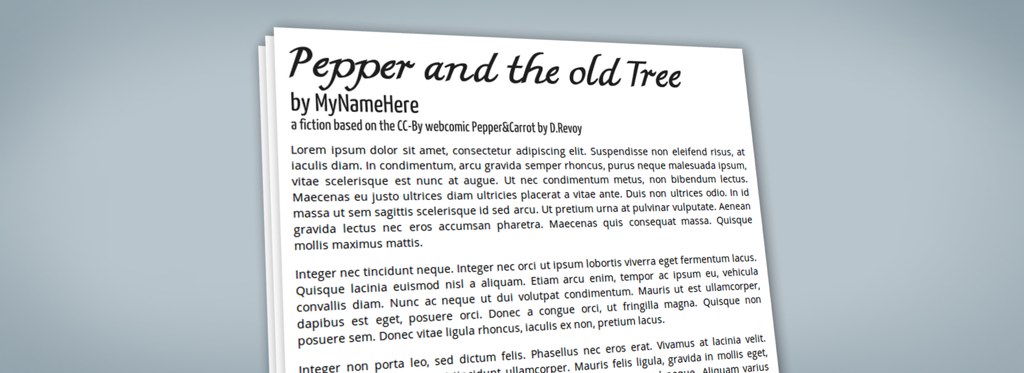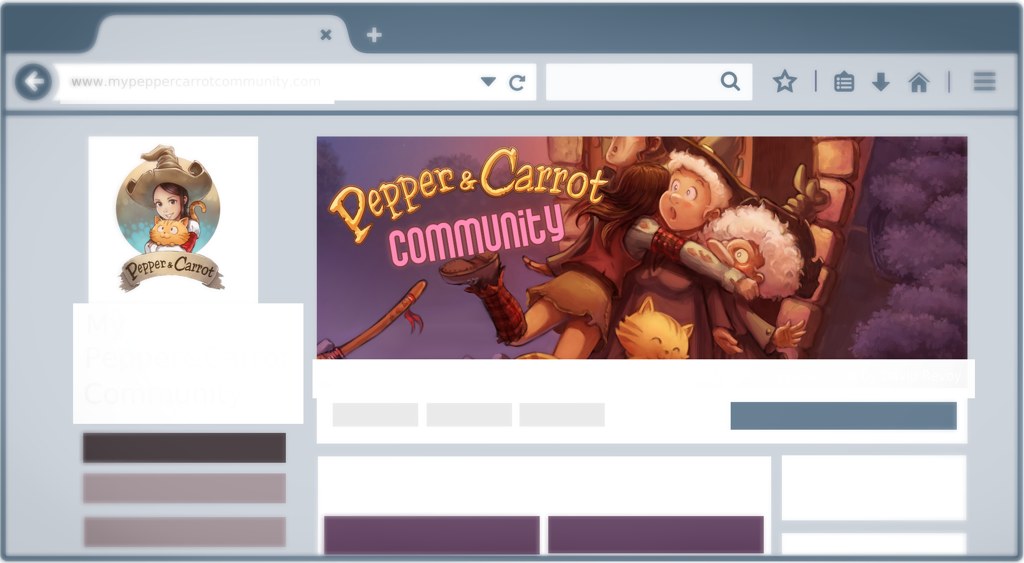Best practices for attribution
Table of Contents
- Getting started
- For derivations
- Publishing the comic on paper
- Movies and video games
- Role-playing game and board game
- Crowdfunding campaign
- Software
- Objects and merchandising
- Community
- Conclusion
For my webcomic Pepper&Carrot, I want to give people the right to share, use, create, build and even make money upon the artworks, stories and universe I've created. (an exception: please do not make NFTs with my art, it infringes my moral right).
For this, I'm publishing my content under a specific license: The Creative Commons Attribution 4.0. It's a very permissive license: you just need to write the "attribution" in order to reuse the work. An attribution is an appropriate credit to the author's name or nicknames (artists, correctors, translators involved in the creation of the media you want to use).
With an attribution for the Creative Commons Attribution 4.0 license (let's shorten it to CC-By) you also need to mention the license of the media (and provide a link if you can) and indicate if you made changes. You may do all of this in any reasonable manner, but not in any way that suggests the authors endorse you or your use. So, let see with a practical example what the best practices to write attribution for Pepper&Carrot are:
Getting started
Repost
That's the first basic case: you just want to repost the media as it is, on another place. For that, you'll just need to write the title of the artwork, my name and the CC-By license.
Bonus points if you make the title an active link to source and the license an active link too ( eg. CC-By ).
Full:
"Artwork title" by David Revoy, licensed under Creative Commons Attribution 4.0.Short:
"Artwork title" by D.Revoy, CC-ByRepost + Modification
If you modified the original artwork, you need to tell your audience how. You just need to indicate "what you did" so the audience will understand "who did what".
Full:
A derivative by MyNameHere of "Artwork title" by David Revoy
licensed under Creative Commons Attribution 4.0. Change made: Crop and color balanced.Short:
A derivative (crop/color) by MyNameHere of "Artwork title" by D.Revoy, CC-ByRepost + Modification + new license
This is possible if the license is CC-By (but will not be possible for a CC-By-Sa one). So check this first.
But if the creation is released under CC-By, you'll be able to relicense the result of your derivation. For this, you have to write the license you want to use (compatible CC-By-Sa, CC-By-Nc, CC-By-Nd or even Copyright, but not compatible Public Domain/CC-0) and keep indicating that the original artwork is released as CC-By. Relicensing your own derivation will not affect the CC-By original file.
Full:
A derivation Copyrighted by MyNameHere of "Artwork title linked to the original page" by David Revoy
originally licensed under Creative Commons Attribution 4.0. Change made: Blue cat is better, added a pencil.Short:
A Copyrighted derivative (blue version/pencil) by MyNameHere of "Artwork title" by D.Revoy, CC-ByFor derivations
Publishing the comic on paper
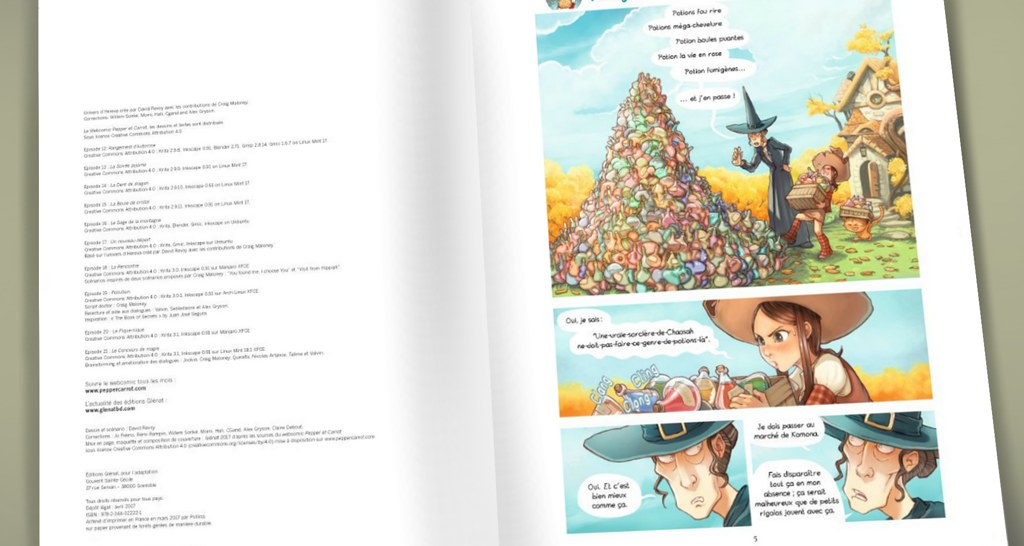 Eg. the second page of the Glénat published comic, with the whole list of attributions
Eg. the second page of the Glénat published comic, with the whole list of attributions
Comic stories have more contributors: proofreaders, script doctors, translators, scenarists, etc. and they are all based on the Hereva universe.
To get the full attributions of all episodes you'll print, You can copy/paste the Credits of this page. It will list a perfect attribution for the current language selected. My advice: small font, multi column, and you'll be able to put them all.
Movies and video games
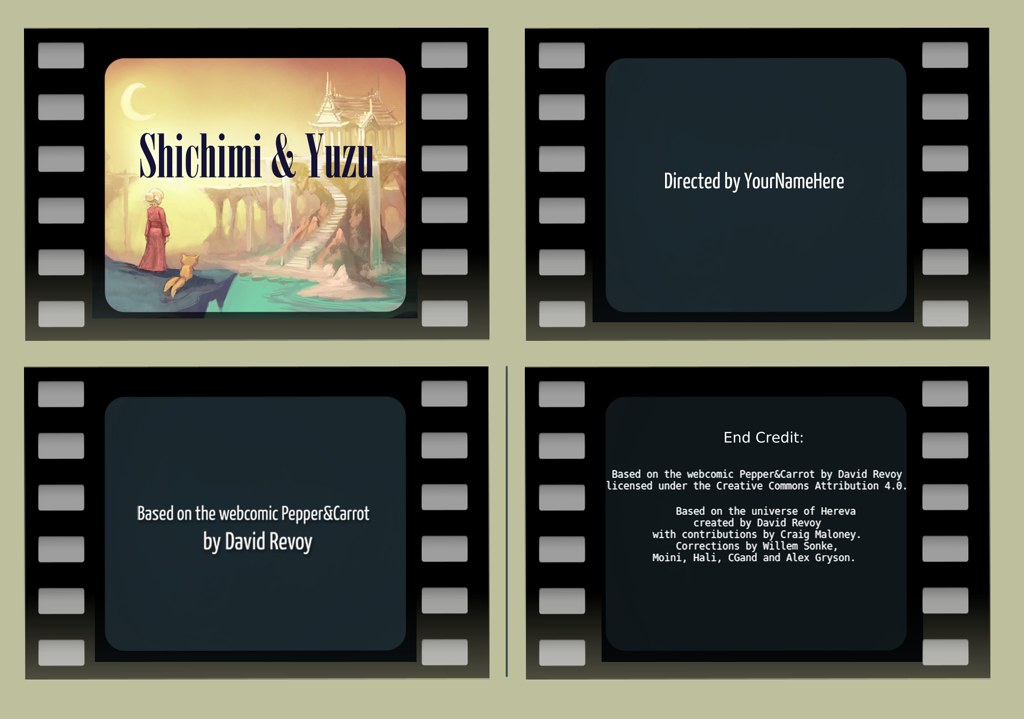 Eg of a screen opening sequence.
Eg of a screen opening sequence.
Modern video games, animations and movies include cinematic introductions (and it can be as simple as slides with company logos and a title) The first screens in the introduction are often a place of choice to insert the general credit. The full and detailed attribution is usually more suited for the end Credits.
Intro screen:
Based on the webcomic Pepper&Carrot by David RevoyFull credits later (end credits):
Based on the webcomic Pepper&Carrot by David Revoy.
https://www.peppercarrot.com
Licensed under the Creative Commons Attribution 4.0.
https://creativecommons.org/licenses/by/4.0/
Based on the universe of Hereva created by David Revoy with contributions by Craig Maloney.
Corrections by Willem Sonke, Moini, Hali, CGand and Alex Gryson.Role-playing game and board game
If you decide to publish a printed role-playing game or a board game about Pepper&Carrot, you'll find yourself in a situation a bit similar to the movie/video game above. But the general credit will go on the cover, and the detailed credit in the printed rules or on the back of the box.
Don't forget to copy this attribution later on every product description if you post it on a eshop.
Box cover:
Based on the webcomic Pepper&Carrot by David RevoyLater (rules, or back of the box):
Based on the webcomic Pepper&Carrot by David Revoy.
https://www.peppercarrot.com
Licensed under the Creative Commons Attribution 4.0.
https://creativecommons.org/licenses/by/4.0/
Based on the universe of Hereva created by David Revoy with contributions by Craig Maloney.
Corrections by Willem Sonke, Moini, Hali, CGand and Alex Gryson.Crowdfunding campaign
If you launch a crowdfunding campaign (Kickstarter/Indiegogo/etc...) around Pepper&Carrot, just attribute the media you use in the campaign correctly and add an important disclaimer to let your audience know some basic information. Especially "where the money goes". In fact, when re-using Pepper&Carrot artworks, universe, etc; a big part of your audience will imagine that they are funding me as an independent artist. You need a disclaimer to tell that in fact, it's your project they fund, not the artist who made the artworks you are reusing on your campaign...
The disclaimer:
DISCLAIMER:
This campaign is collecting funds exclusively for my <MyNameHere> work on the production of <MyProject>.
David Revoy, the original author of the web-comic Pepper&Carrot is not involved in the production process
and does not receive/shares any revenues collected here.
The name of David Revoy on images are specified for attribution purposes but not as sign of affiliation.
You can support his work and webcomic through his Patreon page:
https://www.patreon.com/davidrevoySoftware
A README.md at the root of your project is usually a good place to write information about attributions and credits. If your project is bigger, you might want a separate CREDITS file.
Markdown:
Based on the webcomic [Pepper&Carrot](https://www.peppercarrot.com) by David Revoy
licensed under the [Creative Commons Attribution 4.0 International (CC BY 4.0)](https://creativecommons.org/licenses/by/4.0/).
Based on the universe of Hereva created by David Revoy with contributions by Craig Maloney.
Corrections by Willem Sonke, Moini, Hali, CGand and Alex Gryson.Objects and merchandising
Clothes, figurines, toys and other real-life objects also require a proper attribution on the product itself, on the box/packaging and in the online store listing:
Product label and online store listing
A derivative product designed by MyName/CompanyHere, based on the webcomic Pepper&Carrot by David Revoy (CC-BY)Short:
Design by MyCompanyHere, based on Pepper&Carrot by D.Revoy (CC-BY).Community
Fan-art
If you do fan art, a good practice is to write the attributions/information directly on the picture. This information survives longer than if you write it in the description.
Note: On social networks, using the hashtag #peppercarrot is not an attribution. But it's fun :-)
Fan art attribution:
"My title", a fan art by MyNameHere, based on Pepper&Carrot by D.Revoy (CC-BY).Fan fiction
If you write fan fiction, the best place is to attribute it in the header. So your reader will directly know what they are reading.
Fan fiction attribution:
"My fiction title" by MyNameHere, based on the webcomic Pepper&Carrot by David Revoy (CC-BY)Unofficial forum, community, or channel
External communities, forums, and social media pages play a significant role in expanding the community. If you have created or manage a page like this on your preferred network, please attribute it as follows:
For the header:
Unofficial community based on the universe of the CC-By webcomic Pepper&Carrot by David RevoyIn the "About" page, longer version with more information:
Based on the webcomic [Pepper&Carrot](https://www.peppercarrot.com) by David Revoy
licensed under the [Creative Commons Attribution 4.0 International (CC BY 4.0)](https://creativecommons.org/licenses/by/4.0/).
Based on the universe of Hereva created by David Revoy with contributions by Craig Maloney.
Corrections by Willem Sonke, Moini, Hali, CGand and Alex Gryson.Conclusion
I hope this guide will help you go ahead with your project by providing all the necessary information without waiting for a private authorization or dealing with the long process of setting up a contract.
If you want more information, read the Creative Commons documentation. This page was freely inspired by their wiki page "Best practices for attribution". And if you have any doubts, leave a comment below or better: email me info@davidrevoy.com :-)
 View history
View history
 Edit
Edit


